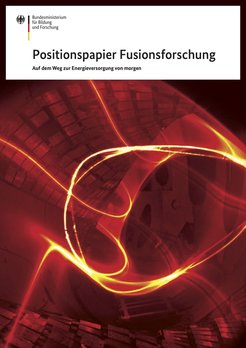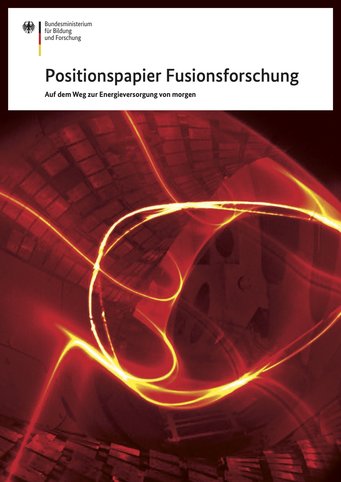IPP Director Sibylle Günter welcomes position paper on fusion by Federal Ministry of Education and Research
The paper presented today outlines fields of action and possible strategically oriented measures in magnetic and laser fusion research. They are to form the basis for a new funding programme to be developed by the Ministry.
Federal Research Minister Bettina Stark-Watzinger, together with Prof. Sibylle Günter, Scientific Director of the Max Planck Institute for Plasma Physics (IPP), presented the "Fusion Research Position Paper" of the Federal Ministry of Education and Research (BMBF) in Berlin today. The paper is the basis for a strategic reorientation of national fusion research and for the path towards a first power plant, said Stark-Watzinger. "Fusion research has recently been experiencing a dynamism that has not been seen since the beginnings of research some 70 years ago," she said.

The position paper explicitly mentions the success in laser fusion in December 2022 at the National Ignition Facility (NIF) of the Lawrence Livermore National Laboratory in California. However, the process is "far from being suitable for industrial application in fusion power plants". The BMBF further writes: "Magnetic fusion is the most advanced approach internationally and currently plays the most important role in research and industry." The strong increase in private involvement in the field of fusion research showed that the international race for the first fusion reactor had long since begun. "In order to meet the societal challenges that have been identified and to strengthen Germany's technological and energy sovereignty, the BMBF is funding research into all approaches that are suitable for this purpose in a way that is open to all technologies," the position paper states.
IPP Director Sibylle Günter was pleased about the support for fusion and clarified: "Germany has been particularly strong in the field of magnetic fusion so far. Our ASDEX Upgrade tokamak in Garching has in many respects been the inspiration for the design of the ITER experiment currently being built in Cadarache in the south of France. Our Wendelstein 7-X stellarator is by far the best stellarator in the world. Its excellent results mean that the stellarator concept is just gaining immense importance worldwide as the basis for a fusion power plant." Prof. Günter was very much in agreement with the fields of action mentioned in the position paper:
- "We need excellent young scientists and to this end we must strengthen education at universities in fusion-oriented plasma physics and especially in the corresponding engineering field.
- We need to keep our research facilities up to date in order to remain at the forefront of fusion research worldwide, but also to be attractive to our young researchers
- On the way to a fusion power plant, we have to think about a set of rules according to which such a power plant can be approved.
- A fusion power plant is not built by research laboratories alone. That is why we are very happy about the increased interest from industry and new start-ups. We need to talk together about models for how a fusion power plant can be efficiently planned and built under the leadership of appropriate industrial companies, probably best in the context of public-private partnerships."
